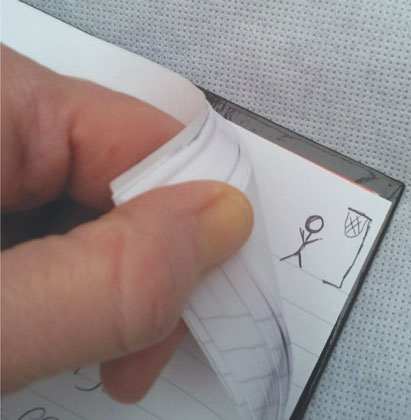Chapter 8. Animation
As we’ve explained in previous chapters, Android devices can do many things. But when learning to program, one of the first things young people usually want to do is create a game, and this often involves animation. Have you ever used or made a flip book—you know, the ones with a stick person walking along the bottom of the page or slam-dunking a basketball? When you see something moving smoothly across a screen, whether it’s a cartoon or a game, what you’re really seeing is a sequence of quickly changing pictures, like in a flip book. Imagine animating a walking zombie. Its position needs to change, which can be achieved by adjusting the zombie’s speed, the direction it’s heading in, and how often it moves (heading and interval properties) in the App Inventor Designer or by letting the user interact with the zombie by clicking buttons, dragging the sprite, tipping the phone, and so on. But if you don’t change the position of the zombie’s legs, it appears to be frozen or floating. To do this in App Inventor, you use a clock timer and lists of images that change each time the zombie moves, giving the appearance of walking rather than floating.

